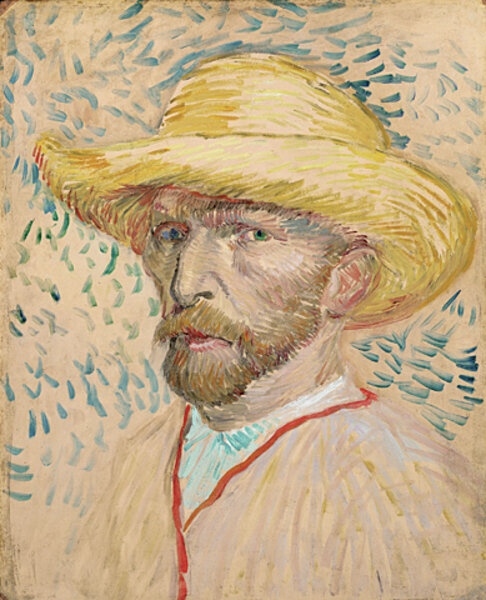A 1:30 a.m. line... for Van Gogh
Loading...
"Lust for Life," a novelized version of Vincent van Gogh's life by Irving Stone written in 1934, was the basis of a 1956 movie starring Kirk Douglas. Tim Roth took on the artist role in Robert Altman's 1990 film "Vincent & Theo." Van Gogh was even the subject of a hit folk song in the 1970s, "Vincent," by Don McLean.
Van Gogh, an inventive, dedicated, and struggling painter in his lifetime, continues to be a pop culture phenomenon 123 years after his death. That much was clear recently at the Denver Art Museum, which kept a Van Gogh exhibition open for 40 hours straight during the last two days of the show to accommodate visitors.
Louis van Tilborgh, a senior researcher at Amsterdam's Van Gogh Museum, says one source of the artist's enduring and broad appeal is simply his paintings, which continue to delight viewers with their bright colors, familiar landscapes, and thickly applied paint. Mr. Van Tilborgh says Van Gogh also connects across the generations through the lively and perceptive letters he wrote to his younger brother Theo, and others. Van Gogh's determination to achieve something in his life and his art despite his personal struggles resonates with many, he adds. "He tried so hard," Van Tilborgh says.
At 1:30 a.m. on a Sunday during the Denver Art Museum's last weekend of "Becoming Van Gogh," the downtown streets were dark and quiet. But inside, early morning could have been early afternoon as a steady flow of visitors drank in the visions of Van Gogh's swirls. The three-month show, which examined the artist's evolution and influences through more than 70 paintings and drawings, had been sold out nearly every day of its run.
For art teacher Andrea Crane, it was her third visit. This time she had brought her husband, Dave, a personal chef. Mr. Crane said he learned something of Van Gogh's fierce will, and was glad he had made the early morning visit, even though his own job starts at the crack of dawn.
Attendance was so steady during the 40-hour stretch that staff had trouble keeping the hand-held audio guide devices charged. Beyond the artist's prolific but short career – he produced more than 2,100 artworks, including 37 self-portraits over two decades – Van Gogh himself is as fascinating as the canvases he painted. Was he really crazy? Did he cut off his own ear? Was his death a suicide? Scholars are still exploring the answers.
Timothy Standring, the curator behind the Denver show, allows only that Van Gogh had a "restless life" and that a study of it makes for "a compelling story."
A story, it appears, that is as endlessly enchanting as a starry sky on a dark night.





